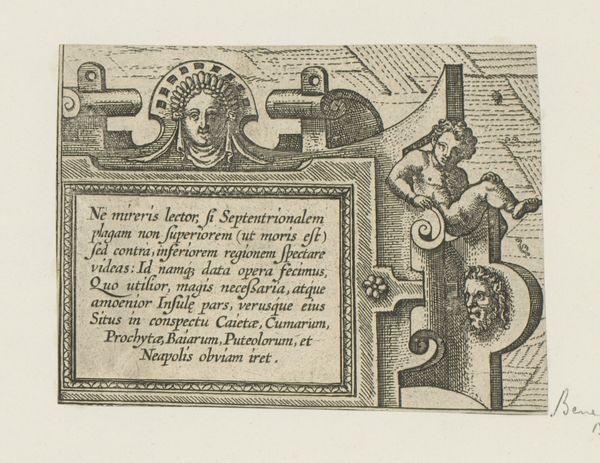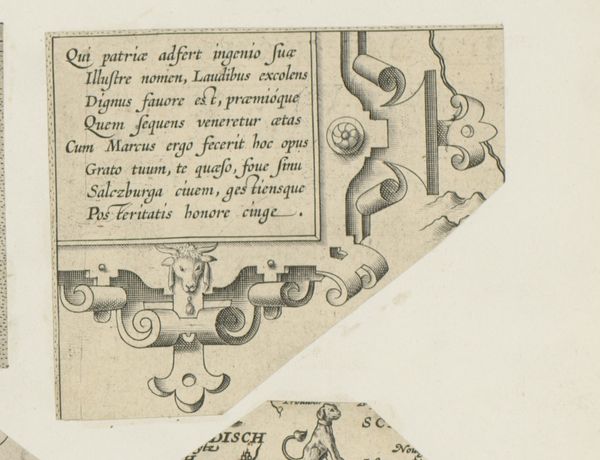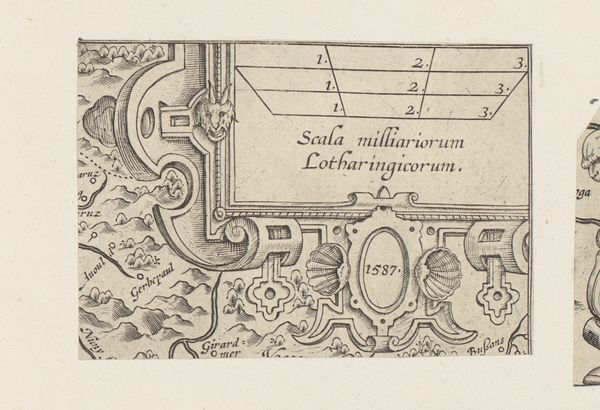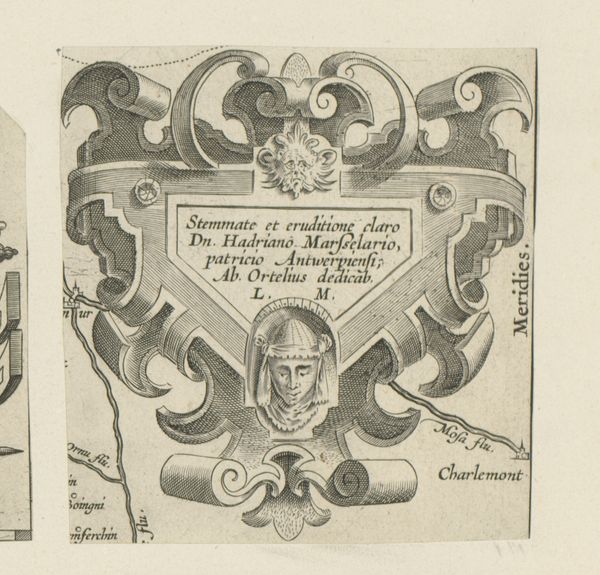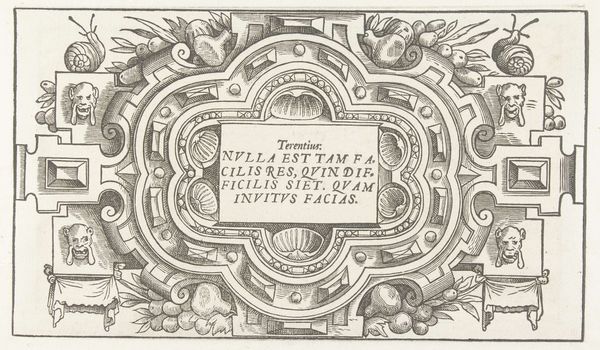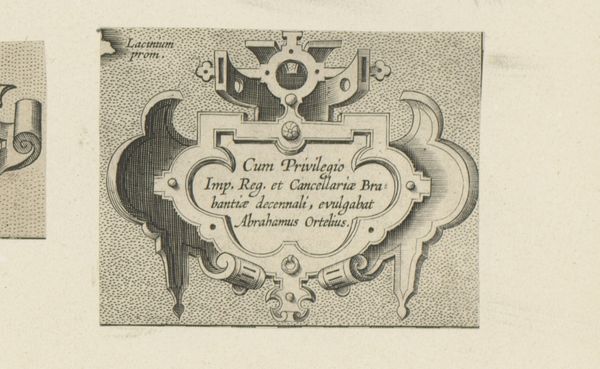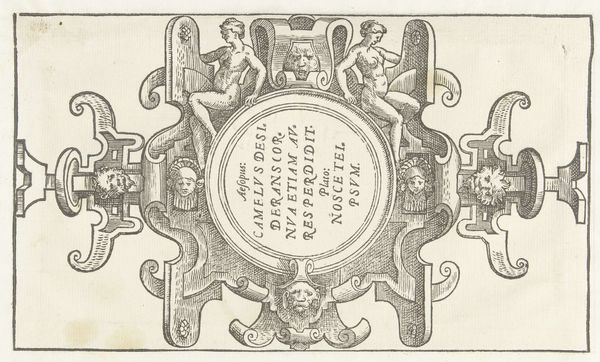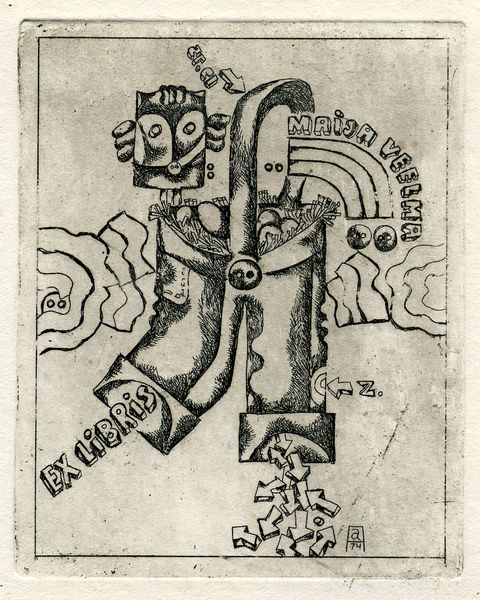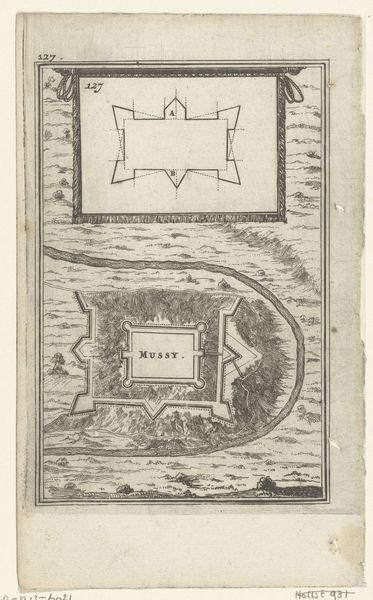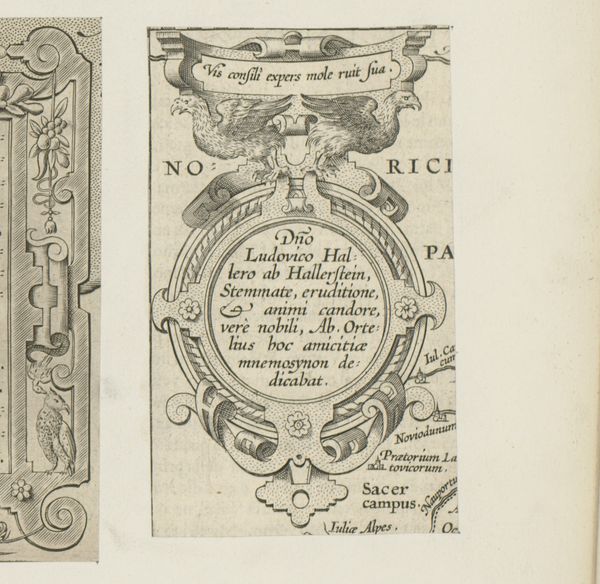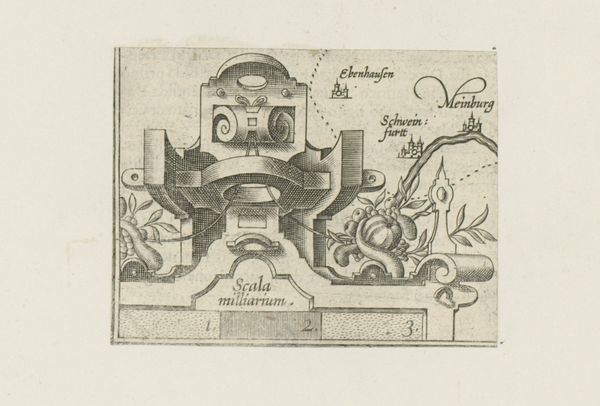
graphic-art, print, engraving
#
graphic-art
#
medieval
# print
#
pen sketch
#
mannerism
#
geometric
#
engraving
Dimensions: height 73 mm, width 75 mm
Copyright: Rijks Museum: Open Domain
Editor: This is "Hoekcartouche met rolwerk," created around 1590. It's an engraving, a print. I'm struck by how geometric it is, but also how much detail is packed into such a small space. What can you tell me about this piece? Curator: Look closely at the means of production. Engraving, as a printmaking technique, was incredibly important for disseminating information and artistic styles during this period. Consider the labour involved in meticulously carving those lines into a metal plate. It’s a repetitive, demanding process. How does this mass production impact its value? Editor: It's interesting to think about it that way. I guess I usually think of prints as being “lesser” than paintings, but you’re saying they served a really vital purpose? Curator: Absolutely! And note the social context here. Prints weren't just about reproducing images; they were about creating a visual language that could be shared across geographical boundaries. Think about the patronage system – who commissioned these prints, and how were they distributed? Editor: So it's not just the image itself, but the entire process of making and distributing it that matters. Like, the materials available, the skills needed… Curator: Precisely! The very act of engraving transforms the artist's labor into a commodity, a tradable object that shapes visual culture and affects those who have access to the work. Think about how cheap reproductions today impact our consumption of images. Editor: This really changes how I see prints. I'll be more mindful of the artist's hand and the printmaker's process next time. Curator: Exactly, questioning the traditional hierarchy that prioritizes singular ‘genius’ over collective labor and accessible artistry.
Comments
No comments
Be the first to comment and join the conversation on the ultimate creative platform.
